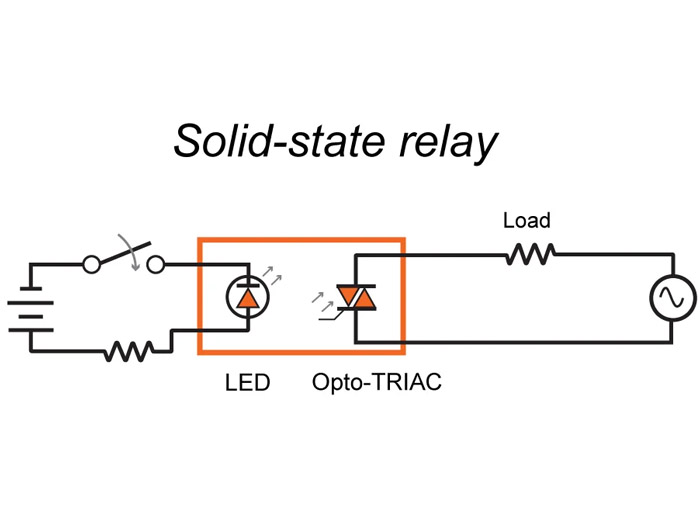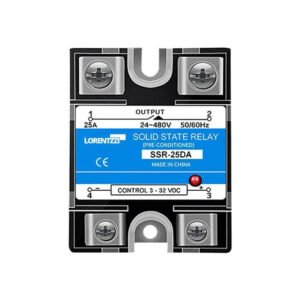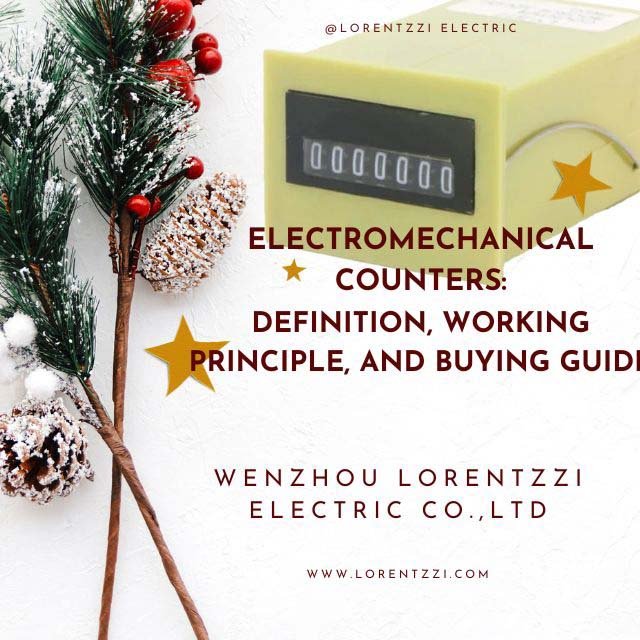Solid state relays and mechanical relays are two common products in electrical systems, but which one is more suitable for us to use? This article will provide knowledge from what are SSR and relays, SSR vs Relay differences and our advice on which one to choose.
Table of Contents
What is a SSR?
SSR is the abbreviation of Solid State Relay. Solid state relay is a new type of non-contact switch that uses small voltage and small current to control the switching of large voltage. Generally, solid-state relays on the market are divided into three types according to different control voltages, namely DC-controlled AC SSR, AC-controlled AC SSR and DC-controlled DC SSR. From the perspective of controlled voltage, solid-state relays are divided into single-phase solid-state relays and three-phase solid-state relays.
Solid state relay consists of three parts: controlled circuit, driving circuit and output circuit. There is an optocoupler in the drive circuit to isolate the low-voltage part and the high-voltage part. That’s why it’s safer to use and makes no noise.

What is a relay?

The relay we are talking about here is an intermediate relay or a mechanical relay. It is a switch that uses the electromagnetic effect generated on the coil to close or open the contacts. It is the most commonly used switch in many electrical devices, ranging from radios and refrigerators to cars and airplanes.
The mechanical relay consists of a fixed iron core, a moving iron core, a return spring, a moving contact, a static contact, a coil, wiring pins and a shell.l, which is the same as a contactor.
The relay is also used for controlling a high voltage by a small DC or AC voltage.
SSR vs Relay: What are the differences?
There are 7 differences when SSR vs relay:
- The working principles are different: the working principle of the relay is based on the electromagnetic effect, and the working principle of the SSR is based on the conduction and cut-off characteristics of the semiconductor device.
- The structure is different: a relay is a product that combines mechanical and electrical components. However, the SSR is a completely electronic device with no mechanical parts.
- Switching speeds are different: The SSR switching speed is much faster than a relay, the relay switching speed is around 50 milliseconds. However, the solid state relay switching speed is around 50 nanoseconds (This data is from https://www.sparkfun.com/news/3330).
- Noise difference: If you have used mechanical relays before, you will find that when we use a small voltage to turn on a large voltage load, a “pop” sound will be produced. A typical example is this sound from the Turn Signal Relaywhile driving and turning on the turn signal. But if you switch to SSR, there will be no noise. This is a very quiet product.
- Sparks: When the load circuit is closed, the two contacts of the relay will generate arcs and sparks due to excessive current. However, an SSR does not because the output is controlled by a semiconductor thyristor.

Image Courtesy: https://www.phidgets.com/docs/Mechanical_Relay_Guide
- Lifespan differences: The life of a relay is usually between tens of thousands to hundreds of thousands of times, but the life of a solid-state contactor can reach more than 1 million times. Therefore, the life of solid state contactors far exceeds that of relays.
- Price difference: Relay is a widely used component and is much cheaper than SSR. Another point is that SSR generates a lot of heat when working, so it needs to be installed on a suitable heat sink. Relays do not.
Advantages and disadvantages of a SSR and a relay
SSR advantages:
- No spark
- Very silent
- Faster switching speed
- Lifespan is long
- Suitable for hazardous environments such as coal mines, flour mills, etc.
- Suitable for frequent switching occasions, such as temperature control
SSR disadvantages:
- A large amount of heat is generated during operation and a radiator is required to help dissipate heat.
- Higher price
Relay advantages:
- Low cost
- Broad usage ranging
- No radiator required for cooling
- Suitable for low-frequency switching situations, such as motor starting.
Relay disadvantages:
- Short life
- It will produce sparks and cannot be used in environments with explosive substances.
- There is noise during operation
Which one is better?
Under the condition that the relay frequently closes and disconnects, it is best to use a solid-state relay, for example, to control the temperature to remain constant at a certain value. On the contrary, use a relay in situations where frequent closing and closing is not required, such as using a relay to control the start and operation of a water pump, etc. . That is to say, the frequent operation of solid-state relays has little effect on the service life, but if ordinary relays are used instead, the service life will be shortened, and the frequent suction noise will be loud.
Conclusion
Although there are many differences between SSRs and relays, they are both excellent products for turning heavy loads on or off with a small and safe voltage. If you have enough budget and want to run silently and switch frequently, choosing SSR as an activator is a wise choice. If you have a tight budget and few switches, choose relays.
As China’s leading SSR manufacturer, Lorentzzi has extensive experience in producing various solid state relays. We focus on product quality and service. Please contact us for the latest wholesale prices of SSRs.










